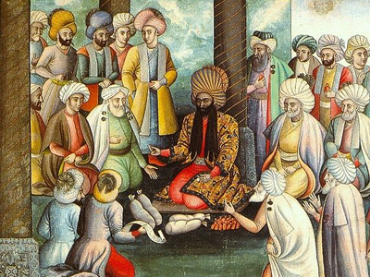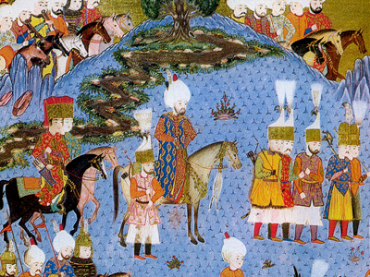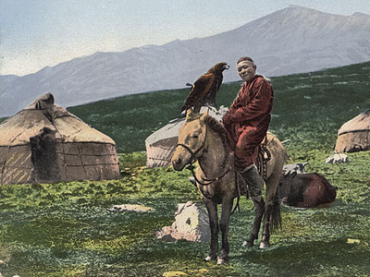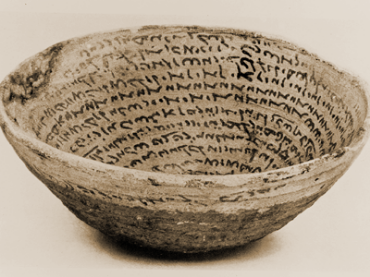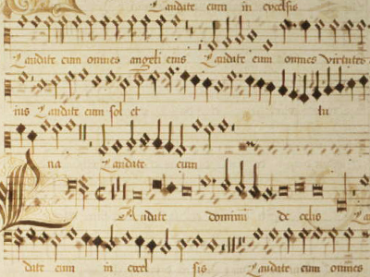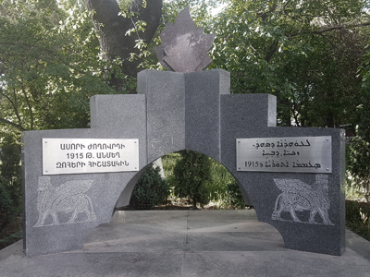History
Introduction to Working with Manuscripts for Medievalists
By János M. Bak
Series: Gorgias Handbooks 37
ISBN: 978-1-4632-0643-7
A short guide for studying, editing and translating medieval texts in manuscript form, outlining the technical steps for preparing a medieval manuscript for print: evaluating and describing the manuscript itself (transmission, provenance, and physical description), textual criticism (reconstruction, emendation, authenticity, dating, and authorship), and steps to preparing an edition or translation.
$35.00
Islamic Origins, Arabian Custom, and the Documents of the Prophet
Series: Islamic History and Thought 17
ISBN: 978-1-4632-0644-4
Early Islamic historical literature attributes several hundred pragmatic documents to the Prophet Muḥammad. The consistent use of epistolary and legal formulae, which are found only in these documents, encourages us to treat these texts as a corpus. In addition to consistent terminology, formulaic structure, and formulae, these texts show remarkable stability through transmission. A comparison of these texts with Umayyad and ʿAbbasid papyri reveals that the Prophet's documents reflect obsolete or otherwise unattested formulae. This study will demonstrate through three case studies the particular functions of these documents in the history of social relations in late antique Arabia.
$149.50 $119.60
The Naval Commanders of Early Islam
A Prosopographical Approach
Series: Islamic History and Thought 16
ISBN: 978-1-4632-0645-1
Translated from Hebrew, this groundbreaking study sets out to answer one simple question: who were the commanders of the early Islamic navy? Using the prosopographical method, Elmakias unearths fresh information about early Islam's inexperienced and pioneering naval commanders. Through their fascinating biographies, we learn about the people who led the Islamic navy during the first conquests of the Islamic empire and helped to realise the spread and expansion of Islamic influence.
$114.95
Al-Ṭabarī’s madhhab jarīrī
A Paradigm of Natural Law and Natural Rights for the ʿAbbasid Caliphate
Series: Islamic History and Thought 30
ISBN: 978-1-4632-0649-9
The book analyses all extant works by Ibn Jarir al-Tabari (d. 224/839–310/923), referring to their individual methodologies; their legacy as al-madhhab al-jariri; and their scholarly and socio- political context. Through the study of al-Tabari’s works, the book addresses research debates over dating the legal and scholarly institutions and their disciplines; authorship and transmission of scholarly writings; political theory and administration; and ‘origins’ of the Qur’an and Islam.
$135.00
The Two-Edged Sea
Heterotopias of Contemporary Mediterranean Migrant Literature
Series: The Modern Muslim World 12
ISBN: 978-1-4632-4372-2
Much Mediterranean migrant literature captures the Mediterranean’s fossilized binaries, North and South. But, The Two-Edged Sea also reveals that one inheres within the other. While the book explores two Mediterraneans, with asymmetrical power relations that reflect the sea’s northern and southern shores, it also delves into how they have been in dialogue with each other, effectively deconstructing the binary. Charting undocumented journeys from the Mediterranean’s southern shores, the book contributes both to discourse on migration literature and the current resurgence of the study of seas, while advancing the idea of the Mediterranean as both a dividing border and unifying contact zone.
$112.00
The Aqaba Khans and the Origin of Khans in Jordan
An Archaeological Approach
Series: Islamic History and Thought 9
ISBN: 978-1-4632-0651-2
A diachronic study of the development of Aqaba castle, an important Islamic khan at the junction of two major pilgrim routes, both based on Arabic and Crusader sources and the results of the excavations undertaken by Ghent University in Aqaba.
$208.00
Constantinus Arabicus
Die arabische Geschichtsschreibung und das christliche Rom
Series: Islamic History and Thought 4
ISBN: 978-1-4632-0652-9
Die folgende Studie beschäftigt sich mit der Rezeption Konstantins in der arabischen Historiographie, sowoh christlicher- als auch muslimischerseits. Eine genauere Analyse der Texte wird zeigen, wie die Geschichte des ersten christlichen Kaisers eine Projektionsfläche für Identitätskonstrutkionen werden konnte, auch über Religionsgrenzen hinaus.
$178.00 $142.40
Middle Eastern Minorities and the Arab Spring
Identity and Community in the Twenty-First Century
Edited by K. Scott Parker & Tony E. Nasrallah
Series: The Modern Muslim World 2
ISBN: 978-1-4632-0653-6
Middle Eastern Minorities and the Arab Spring: Identity and Community in the Twenty-First Century examines eleven minority groups in the early years of the so-called Arab Spring. Wide-ranging in scope, minorities of diverse religious and ethno-linguistic backgrounds are included from North Africa, the Levant, and the Arabian Peninsula. Each has experienced the Arab Spring differently and uniquely depending upon their context. Of particular concern to the international team of scholars involved in this volume, is the interaction and reaction of minorities to the protest movements across the Arab World that called for greater democratic rights and end to respective autocratic regimes. While some minorities participated in the Arab Spring, others were wary of instability and the unintended effects of regime change – notably the rise of violent Islamism. The full effects of the Arab Spring will not be known for years to come, but for the minorities of the Middle East, the immediate future seems certainly tenuous at best.
$170.00
The Scholastic Culture of the Babylonian Talmud
Series: Judaism in Context 31
ISBN: 978-1-4632-0657-4
The Scholastic Culture of the Babylonian Talmud studies how and in what cultural context the Talmud began to take shape in the scholastic centers of rabbinic Babylonia. Bickart tracks the use of the term tistayem ("let it be promulgated") and its analogs, in contexts ranging from Amoraic disciple circles to Geonic texts, and in comparison with literatures of Syriac-speaking Christians. The study demonstrates increasing academization during the talmudic period, and supports a gradual model of the Talmud's redaction.
$115.00
Jewish and Roman Law (volume 1)
A Comparative Study
By Boaz Cohen; Introduction by Natalie B. Dohrmann
Series: Judaism in Context 21
ISBN: 978-1-4632-0660-4
This work is volume 1 of Boaz Cohen’s collected articles, with a new introduction by rabbinics scholar Natalie B. Dohrmann.
$72.60
The Chronicle of Zuqnīn
Parts I and II. From the Creation to the Year 506/7 AD
Edited and Translated by Amir Harrak
Series: Gorgias Chronicles of Late Antiquity 2
ISBN: 978-1-4632-0663-5
The Chronicle of Zuqnin is a universal history beginning with the Creation according to the biblical account and ending with the time of the Chronicler, the years 775-776 AD. The author is most probably Joshua the Stylite, a contemporary of the Caliphs al-Mansur and al-Mahdi, who lived in the monastery of Zuqnin that was located near Amid, the Diar-Bakr of modern Turkey. Parts I and II contain compiled sources some of which survived only in this Chronicle. Sources include the Bible, Cave of Treasures, the Sleepers of Ephesus, Eusebius of Caesarea, Socrates, and the short Chronicle called Pseudo-Joshua the Stylite that deals with Sassanian-Byzantine warfare at the begging of the 6th century. Parts III and IV cover the years 488 and 775 AD. In this volume, Parts I and II, including the author’s dedicatory letter, are now published in an updated edition of the Syriac text and the first English translation.
$215.00
Muslims, Jews and Pagans
Studies on Early Islamic Medina
Series: Gorgias Islamic Studies 9
ISBN: 978-1-4632-0664-2
Muslims, Jews and Pagans examines in much detail the available source material on the 'Āliya area south of Medina on the eve of Islam and at the time of the Prophet Muḥammad. It provides part of the necessary background for the study of the Prophet's history by utilizing in addition to the Prophet's biographies, various texts about the history, geography and inhabitants of this area.
$78.00
American Journal of Ancient History 3.1
Series: American Journal of Ancient History 3.1
ISBN: 978-1-4632-0666-6
The historic American Journal of Ancient History. This volume contains 6 articles: Peter Green, 'Caesar and Alexander: Aemulatio, Imitatio, Comparatio', Phyllis Culham, 'The Delian League: Bicameral or Unicameral?', J.M. Bigwood, 'Ctesias' Description of Babylon', T.D. Barnes, 'Emperor and Bishops, A.D. 324-244: Some Problems', Duncan Fishwick, 'Claudius Submersus', Marleen Boudreau Flory, 'Family in Familia: Kinship and Community in Slavery'.
$54.00
American Journal of Ancient History 3.2
Series: American Journal of Ancient History 3.2
ISBN: 978-1-4632-0667-3
The historic American Journal of Ancient History. This volume contains 7 articles: E.M. Wightman, 'Peasants and Potentates: An Investigation of Social Structure and Land Tenure in Roman Gaul', G.L. Snider, 'Hesiod's Sailing Season (W & D 663-665)', Larissa Bonfante, 'Historical Art: Etruscan and Early Roman', T.P. Wiseman, 'Flavians on the Capitol', P. Harding, 'O Androtion, You Fool!', J.R. Melville-Jones, 'The Value of Gold at Athens in 329/8 BC', K.R. Walters, 'Diodorus 11.82-84 and the Second Battle of Tanagra'.
$54.00
American Journal of Ancient History 4.1
Edited by Ernst Badian
Series: American Journal of Ancient History 4.1
ISBN: 978-1-4632-0668-0
The historic American Journal of Ancient History. This volume contains 7 articles: E. Fredricksmeyer, 'Three Notes on Alexander's Deification', June W. Allison, 'Thucydides and Polypragmosyne', K.H. Kinzl, 'Betrachtungen zur Alteren Griechischen Tyrannis', Roger S. Bagnall, 'The Date of te Foundation of Alexandria', John Buckler, 'The Re-establishment of the Boiotarchia (378 BC), Frank M. Clover, 'Count Gainas and Count Sebastian', Catherine Reid Rubincam, 'Qualification of Numerals in Thucydides'.
$54.00
American Journal of Ancient History 4.2
Series: American Journal of Ancient History 4.2
ISBN: 978-1-4632-0669-7
The historic American Journal of Ancient History. This volume contains 8 articles: P.J. Parsons, 'The Burial of Philip II?', Eugene N. Borza, 'Some Observations on Malaria and the Ecology of Central Macedonia in Antiquity', John Humphrey, 'The Three Daughters of Agrippina Maior', Luciana Aigner Foresti, 'Zur Zeremonie der Nagelschlagung in Rom und in Etrurien', June W. Allison, 'Additional Note', Frank J. Frost, 'The Dubious Origins of the 'Marathon', E. Badian, 'The Name of the Runner: A Summary of the Evidence', Geza Alfoldy, 'Review-Discussion: Ronald Syme, Roman Papers', Michael B. Walbank, 'The Family of Philagros Erchieus and the Cult of Asklepios at Athens'.
$55.00
American Journal of Ancient History 5.1
Series: American Journal of Ancient History 5.1
ISBN: 978-1-4632-0670-3
The historic American Journal of Ancient History. This volume contains 5 articles: Stanley M. Burstein, 'The Aftermath of the Peace of Apamea', Edward Champlin, 'The Volcei Land-Register (CIL X 407)', John K. Evans, 'Plebs Rustica. The Peasantry of Classical Italy', Allen M. Ward, 'The Conference of Luca: Did it Happen?', Noel D. Robertson, 'The True Nature of the 'Delian League'',
$54.00
American Journal of Ancient History 5.2
Series: American Journal of Ancient History 5.2
ISBN: 978-1-4632-0671-0
The historic American Journal of Ancient History. This volume contains 4 articles: Gerhard Perl, 'Cn. Tremelius Scrofa in Gallia Transalpina', Noel D. Robertson, 'The True Nature of the 'Delian League' II', John K. Evans, 'Plebs Rustica. The Peasantry of Classical Italy II', A.M. Eckstein, 'Perils of Poetry'.
$54.00
American Journal of Ancient History 6.1
Series: American Journal of Ancient History 6.1
ISBN: 978-1-4632-0672-7
The historic American Journal of Ancient History. This volume contains 4 articles: V.M. Warrior, 'Livy, Book 42: Structure and Chronology', Judith R. Ginsburg, 'Nero's Consular Policy', R.M. Errington, 'Review Discussion: Four Interpretations of Philip II', D. Fishwick, 'A Gold Bust of Titus at Emerita'.
$54.00
American Journal of Ancient History 6.2
Series: American Journal of Ancient History 6.2
ISBN: 978-1-4632-0673-4
The historic American Journal of Ancient History. This volume contains 5 articles: John J. Keaney, 'Aristotle, Politics 2.12.1274a22-b28', Walter Donlan, 'Scale, Value and Function in the Homeric Economy', Lawrence A. Tritle, 'Phokion Phokou Potamios?', Robert Drews, 'The Coming of the City to Central Italy', Kenneth Wellesley, 'What Happened on the Capitol in December AD 69?'.
$54.00
American Journal of Ancient History 7.1
Series: American Journal of Ancient History 7.1
ISBN: 978-1-4632-0674-1
The historic American Journal of Ancient History. This volume contains 6 articles: P.J. Rhodes, 'Problems in Athenian Eisphora and Liturgies', Robert J. Rowland, Jr., 'Beyond the Frontier in Punic Sardinia', D.R. Shackleton Bailey, 'Who is Junia?', Daniel R. Schwartz, 'Apollonius, Son of Menestheus: Whose Ambassador?', Richard A. Billows, 'The Last of the Scipios', A.M. Eckstein, 'Human Sacrifice and Fear of Military Disaster in Republican Rome'.
$54.00
American Journal of Ancient History 7.2
Series: American Journal of Ancient History 7.2
ISBN: 978-1-4632-0675-8
The historic American Journal of Ancient History. This volume contains 5 articles: Edward Champlin, 'The Suburbium of Rome', Robert A. Moysey, 'Isokrates' On the Peace: Rhetorical Exercise or Political Advice?', N.G.L. Hammond and M.B. Hatzopoulos, 'The Via Egnatia in Western Macedonia I', Arthur Keaveney, 'Sulla Augur', M.H. Hansen, 'Demographic Reflections on the Number of Athenian Citizens 451-309 BC'.
$54.00
American Journal of Ancient History 8.1
Series: American Journal of Ancient History 8.1
ISBN: 978-1-4632-0676-5
The historic American Journal of Ancient History. This volume contains 4 articles: Ellen Meiksins Wood, 'Agricultural Slavery in Classical Athens', N.G.L. Hammond and M.B. Hatzopoulos, 'The Via Egnatia in Westen Macedonia II', Myles McDonnell, 'Divorce Initiated by Women in Rome', Robert W. Wallace, 'The Date of Solon's Reforms'.
$55.00
American Journal of Ancient History 8.2
Series: American Journal of Ancient History 8.2
ISBN: 978-1-4632-0677-2
The historic American Journal of Ancient History. This volume contains 4 articles: Raphael Sealey, 'How Citizenship and the City Began in Athens', Israel Shatzman, 'The Beginning of the Roman Defensive System in Judaea', Thomas R. Martin, 'Quintus Curtius' Presentation of Philip Arrhidaeus and Josephus' Accounts of the Accession of Claudius', D.R. Shackleton Bailey, 'Brothers or Cousins?'.
$54.00
American Journal of Ancient History 9.1
Series: American Journal of Ancient History 9.1
ISBN: 978-1-4632-0678-9
The historic American Journal of Ancient History. This volume contains 7 articles: T. Yoshimura, 'Zum romischen Libertas-Begriff in der Aussenpolitok im zweiten Jahrhundart vor Chr', Kerry A. Christensen, 'The Theseion: A Slave Refuge at Athens', Adalberto Giovannini, 'Review-Discussion: Roman Eastern Policy in the Late Republic', S.V. Tracy, 'The Date of the Athenian Archon Achaios', Michael Vickers, 'Demus's Gold Phiale (Lysias 19.25)', Robert L. Hohlfelder, 'Marcian's Gamble: A Reassessment of Eastern Imperial Policy toward Attila AD 450-453', C.P.T. Naude, 'The Date of the Lower Books of Ammianus Marcellinus'.
$54.00
Filter by
Filter by price
Filter by manufacturer

